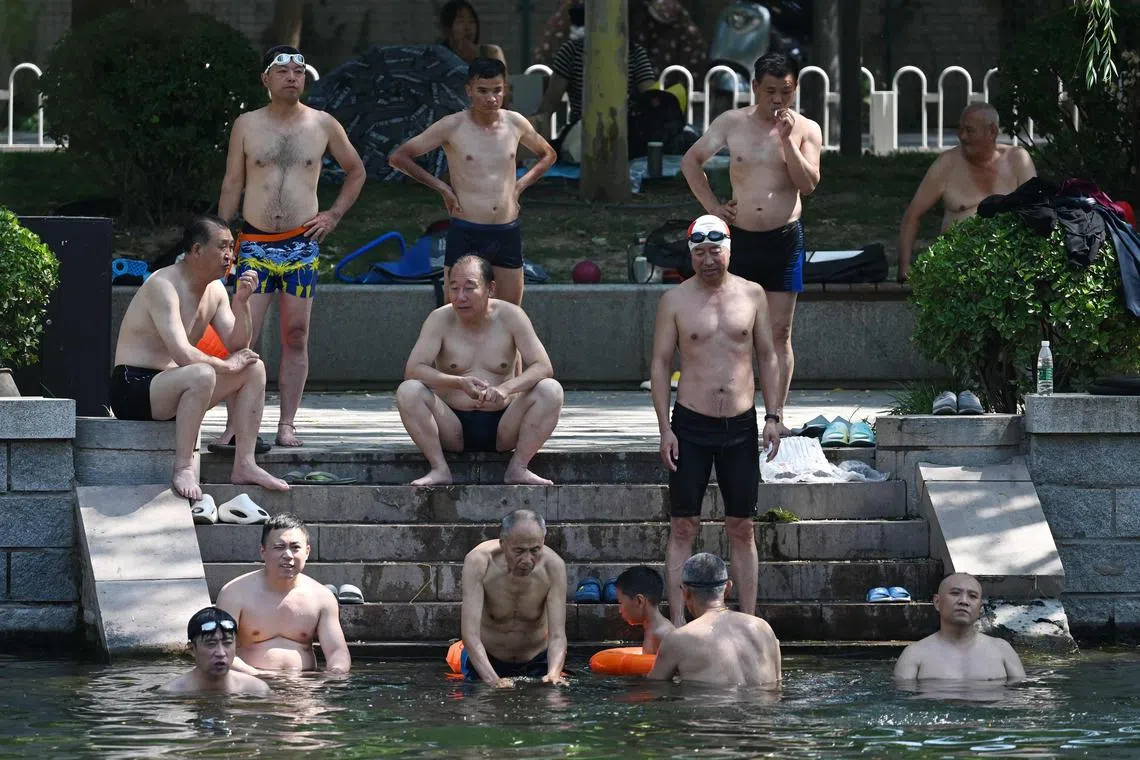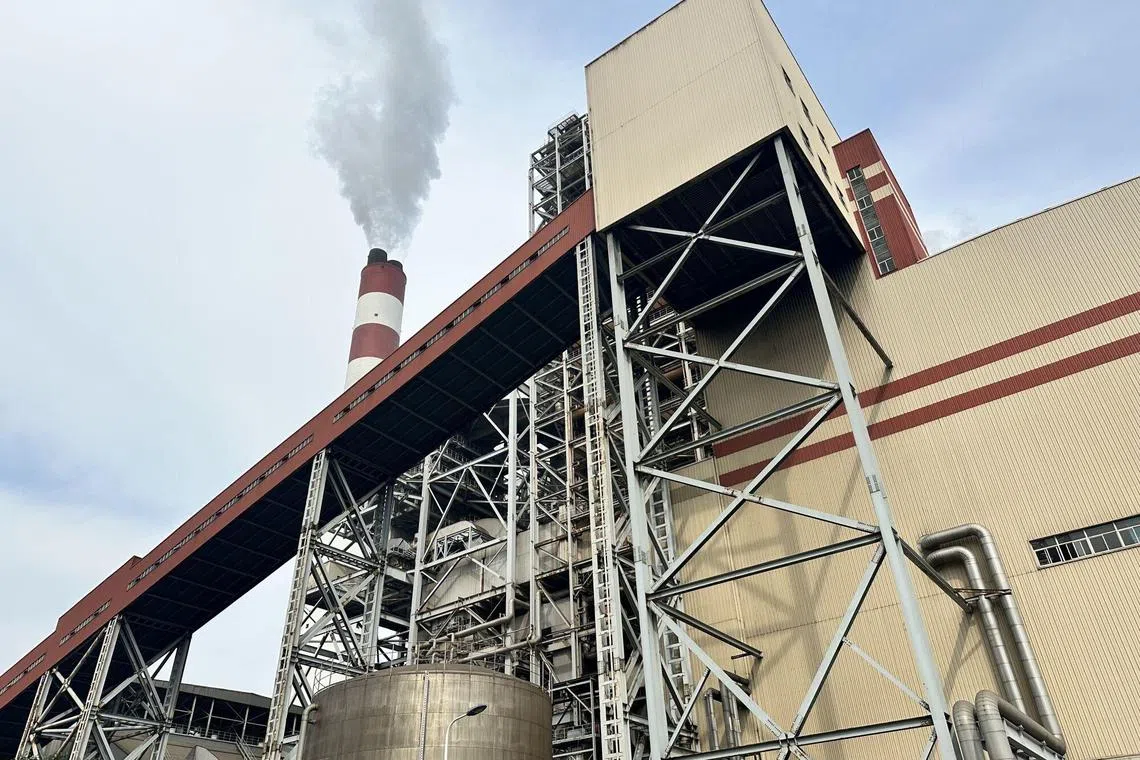Heatwave puts China’s renewable energy grid, climate commitments to the test
Sign up now: Get insights on Asia's fast-moving developments

People shield themselves from the sun, as they walk amid a red alert for heatwave in Beijing, on June 23.
PHOTO: REUTERS
Follow topic:
BEIJING – A heatwave that tormented parts of southern China earlier this month has moved northwards, sending temperatures soaring to over 40 deg C in much of the north-east, putting a strain on the power grid
The country is on track to face its hottest June on record, with parts of Shandong province already reporting scorching heat of over 43 deg C this week, while the mercury in Beijing has hit 40 deg C for two days in a row.
As China braces itself for the full impact of summer, the heat is also putting the world’s biggest renewable energy market to the test.
Nearly half of the country’s energy production comes from renewable sources, largely from solar and wind. China is the world’s largest producer of clean energy.
As part of its climate goals to reach peak carbon output by 2030,
But the exact phenomenon it is trying to slow – climate change – has proven to be a key stumbling block.
An extended drought and scorching temperatures led to intermittent power cuts in parts of China last year, especially in the south-western province of Sichuan, where 80 per cent of its energy use comes from hydropower.
But with hydropower generation curtailed by drought, and rising energy use from many turning on air-conditioners, much of the province had to contend with power shortages.
Energy-intensive industries were ordered to suspend production for multiple days in a bid to give households priority.
“Heatwaves are kind of the start of a vicious (circle) downwards. You’re creating climate change, and then you’re causing more demand for energy, and then it’s creating more climate change,” Ms Malavika Bambawale, Asia-Pacific managing director at multinational utility company Engie’s sustainability division Engie Impact, told Reuters.
This year, officials have been rushing to ensure that the power grid can keep up with peak summer demand that has come earlier than usual.
In April, officials from the National Energy Administration (NEA) warned that the country’s power demand could hit a new high this year of 1,360 gigawatts (GW) in the summer, more than the peak of 1,290GW last year.
The NEA also staged an emergency power drill on the state grid’s eastern network, simulating a power cut in order to test the system’s back-up and early warning mechanisms.
Home to economically important cities like Shanghai and Hangzhou, the area expects a peak load of more than 397GW this year, greater than the total energy generation of Japan.
China has also approved a wave of permits for coal-fired power plants, according to research from the Centre for Research on Energy and Clean Air and the Global Energy Monitor, in a bid to ensure energy security through the year.

Men cool off in the heat in a canal in Beijing on June 22, 2023.
PHOTO: AFP
In 2022, the country approved 106GW of new coal power capacity, or the equivalent of 100 large fired power plants.
And until better storage solutions are invented for renewable energy, fossil fuel will still be the most reliable way of ensuring energy security, said Mr Kelvin Pooh, co-founder and chief executive of EagleRE, a firm specialising in renewable energy solutions.
He estimated that it would take at least a decade to upgrade the power grid and key infrastructure to be able to fully integrate a system where power is generated by both renewables and fossil fuels.
“As the world goes through its power transition, it needs the grid to be more nimble so it can easily switch between renewables and fossil fuels depending on climate conditions,” he said.
But in the coming weeks, China has to look for more pragmatic solutions to keep the lights on while beating the heat.

The Shanghai Waigaoqiao No. 3 Power Plant in Shanghai has ramped up generation since the start of the month to cope with the hot weather.
PHOTO: BLOOMBERG
In north-eastern Liaoning province, the local Department of Water Resources has increased water reserves in key agricultural areas.
Reserve coal- and gas-fired plants are also on standby to be put to use at a moment’s notice.
For residents in Beijing, however, there appears to be little worry of any potential power outage.
“When it gets too hot, I either go to an air-conditioned cafe, or simply turn on the air-conditioning at home where I can cool down,” said designer Sonia Chen, 34.
“I know it’s adding to climate change, but I’m just one person, what change can I make?
“Furthermore, I know that being in the capital, the government is always going to ensure that we have a consistent power supply, so I’m not worried at all.”


